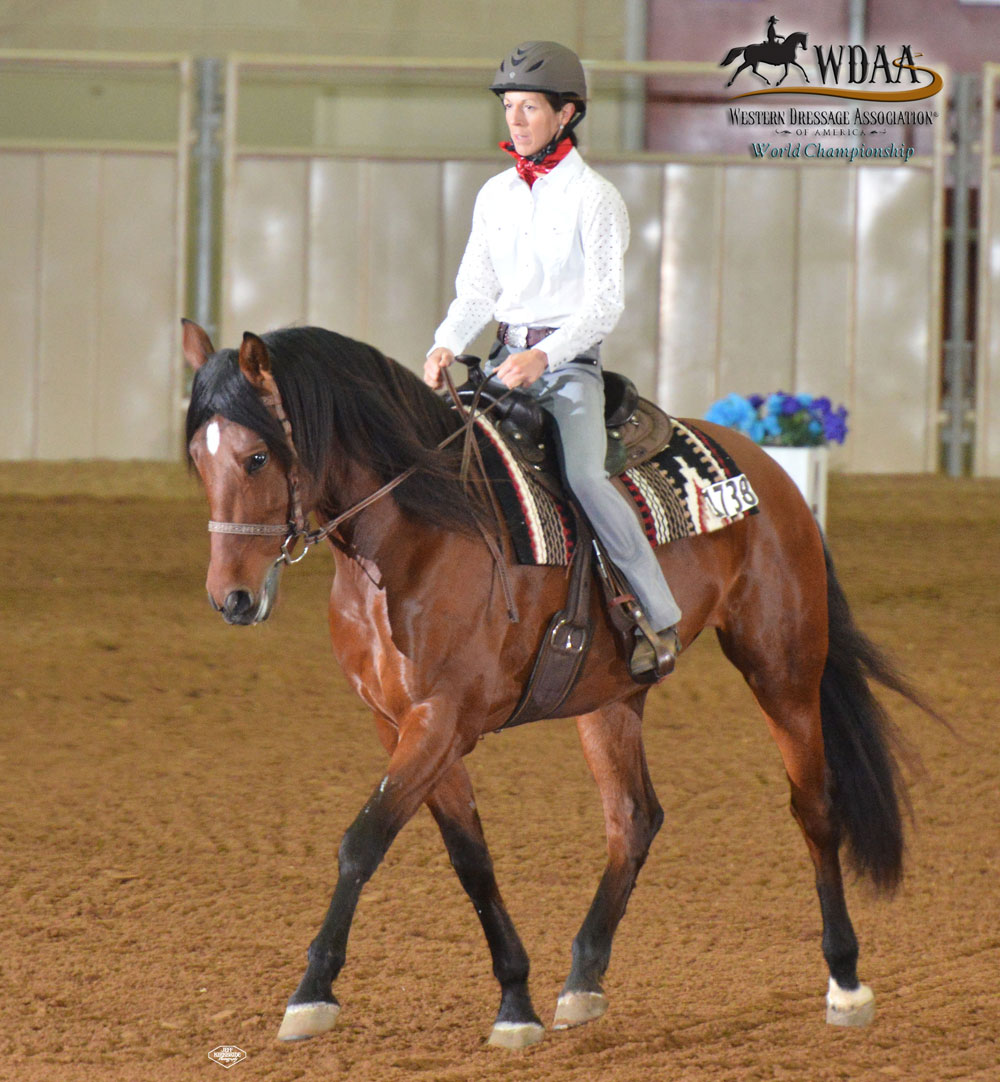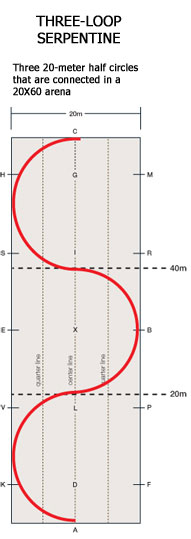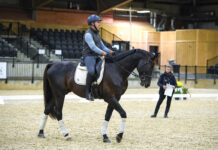
Learn how to include the serpentine horse exercise into your training.
More often than not, riders end up with vaguely defined figures: wobbly circles, wandering turns, and so on. The downside of this, aside from being unclear to the horse, is that you lose communication with the horse’s hind legs and he adopts poor alignment, usually getting crooked in the direction of his dominant side, since horses are naturally as crooked as their human partners.
The benefit of serpentines as part of your horse’s exercise, in particular, is that they use a dynamic pattern of bending the horse from side to side, meaning he keeps flexing his spine back and forth in both directions rather than holding a fixed posture. This has the result of cueing both sides of the horse’s nervous system equally while he is traveling. In other words, it cuts through his innate side dominance. It loads his nervous system with different, positive input.
The following is an excellent sequence to coordinate a rider’s aids to help the horse overcome side dominance. It requires making subtle but clear shifts in geometry that bring more control and engagement to the horse’s hind legs. When this happens, other delightful things start happening, such as collection, self-carriage, and lightness because the horse is now pushing equally from both hind legs rather than traveling with misalignment. Practice alternating between the following figures during a session.

Three-Loop Serpentine
- Begin in working walk or jog, tracking right.
- At A, begin a three-loop serpentine. For an accurate three-loop serpentine, ride three 20-meter half circles connected together. Be sure to touch the rail at the apex of each loop. If you are not reaching the sides of the arena, your loops are too small.
- Be sure to change flexion/bend through your horse’s entire poll and spine each time you start a new loop; do not just turn and drift in the new direction.
- All three loops should be equal size and shape. Arrive at the end of your serpentine with the same rhythm that you started.
Square Serpentine
- Ride the above pattern again, except in the place of rounded loops, make box turns across the arena.
- Begin at A in working trot or jog, traveling right.
- Between K and E, ride a square turn to the right.
- Proceed straight across the arena to the opposite rail.
- Turn left and ride straight down the rail.
- Halfway between B and M, ride a square turn left and again ride straight across the arena.
- At the opposite rail, turn right and proceed along the rail.
Five-Loop Serpentine
- If you are in a standard large dressage arena, a five-loop serpentine contains five 12-meter half circles with straight lines connecting them.
- Begin at A in a working walk or jog, tracking right.
- Proceed straight for two to three strides when you change your horse’s bend. Then begin a 12-meter half circle the new direction.
- Carry on like this until you arrive at the end of the arena at C, having ridden five equal-sized loops.
- Be sure that each loop touches the track of the arena.
Remember to support your horse with your outside leg during each turn or loop. Many riders struggle to create an adequate bend with their horses because their own outside leg is not far enough back and against the horse during the moment of the turn.
Think of your outside leg like a guardrail. It keeps the horse’s haunches aligned, maintains his momentum, and defines the amount of bend or sharpness of turn you want. Also be sure to listen to and feel for the horse’s footfalls. Keep them steady and unchanging; a consistent rhythm is a big part of the success of this exercise.
JEC ARISTOTLE BALLOU is the author of 101 Dressage Exercises for Horse & Rider and Equine Fitness. www.jecballou.com
This article about serpentine horse exercise originally appeared in the March 2018 issue of Horse Illustrated magazine. Click here to subscribe!






